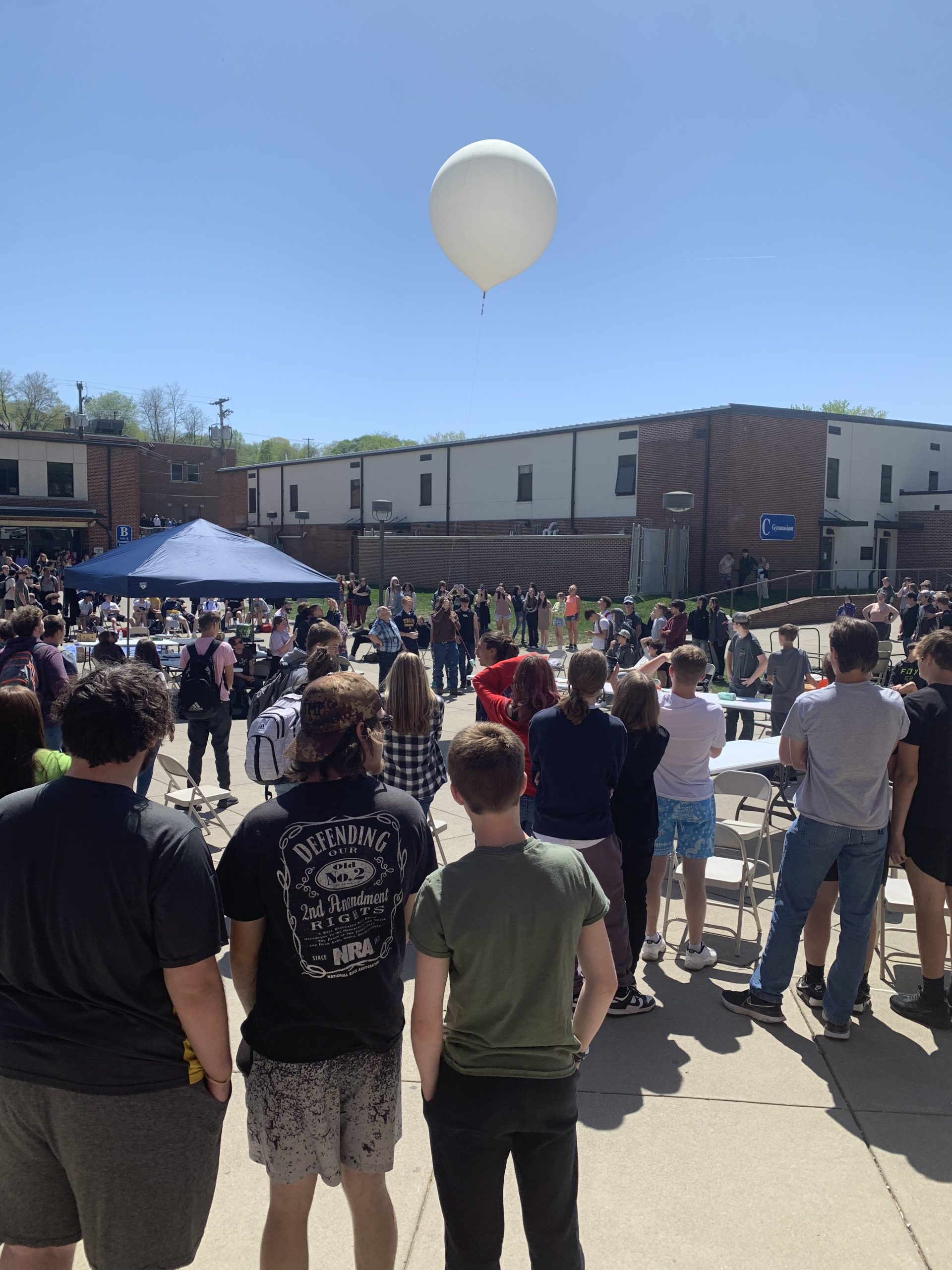The weather was prefect for the sixth annual Weather Balloon launch at Berkeley Springs High School.
The launch took place on Friday, April 20, under clear blue skies at noon.
Berkeley Springs High School science teacher John Brode and his Earth and Space Science, Physical Science, and Astronomy classes participated in the event. More than 120 of Brode’s students were involved in the science project.
This hands-on project included many areas of science, technology, engineering, and mathematics (STEM). Students were assigned to teams that were given specific tasks to learn. Some of 26 teams included inflation, payload design, photography, tracking, landing site projections, FAA regulations, electronics, and public relations.
Within each team, students worked together as they solved problems they encountered along the way. Collaboration between teams also occurred in decision making. For example, the weather team and the landing site prediction teams made decisions about the best day to launch the balloon. Every student contributed to the project.
Brode said, “Our weather balloon is larger than those launched daily by the National Weather Service around the country. The balloon that we launch travels higher and collects similar data used for making weather predictions.”
The process of launching a weather balloon is much more complicated than filling a balloon with helium and letting it go.
There are many FAA regulations that must be followed in order to get approval. The weight and size of the payload container(s) are important. Certain equipment such as a radar reflector, cut-down system and parachute are required. Students made sure that these items were part of the design.
On launch day, teams reported to the center of campus to begin the process. After setting up the site, balloon inflation began.
At the command center, the landing site prediction team discovered that there was a problem.
Students using Chromebooks and online tools discovered that wind patterns had changed since earlier in the morning. Now, the balloon might land in the center of Frederick, Md. Landing in a populated a

rea would not be ideal. The prediction team worked hard and determined that if the launch was delayed by two hours, it should land north of Frederick in a safer area. The original launch time was changed from 10 a.m. to noon.
Finally, it was time for the students to launch their project. An announcement was made, and several classes came out to watch.
Electronic devices were turned on as final checks were done. The balloon was carefully guided forward as the 80-ft. payload string moved to the release point. All the students cheered as the balloon took flight. Many pictures and videos were taken as the balloon flew out of site.
Tracking began shortly after the launch. The balloon was following very close to the predicted path. Brode and his wife left school to find the balloon. It landed very close to where the students thought it would land. The landing site was along Route 15 North, on the side of the road.
“This site was a little too close to the road. Luckily, we made it in time before it was run over,” Brode said. All materials were returned safely to school a few hours after landing.
The following day, students were amazed to learn that their hard work had paid off. In the following week, they analyzed the weather data. Students learned how temperature, pressure, and humidity changed as the balloon traveled through the troposphere and part of the stratosphere.
More importantly, the students learned how beneficial it was to work together towards a common goal.










